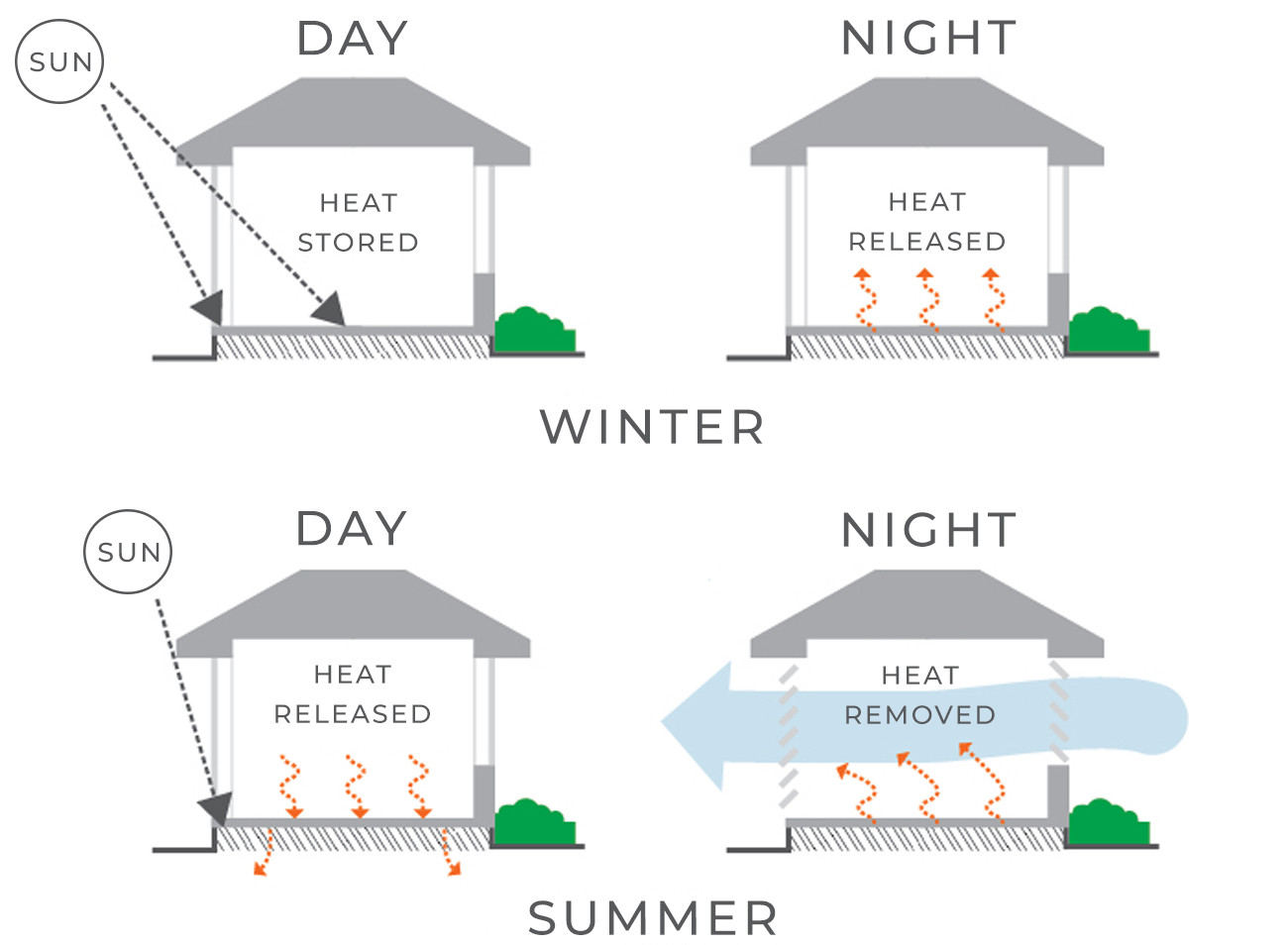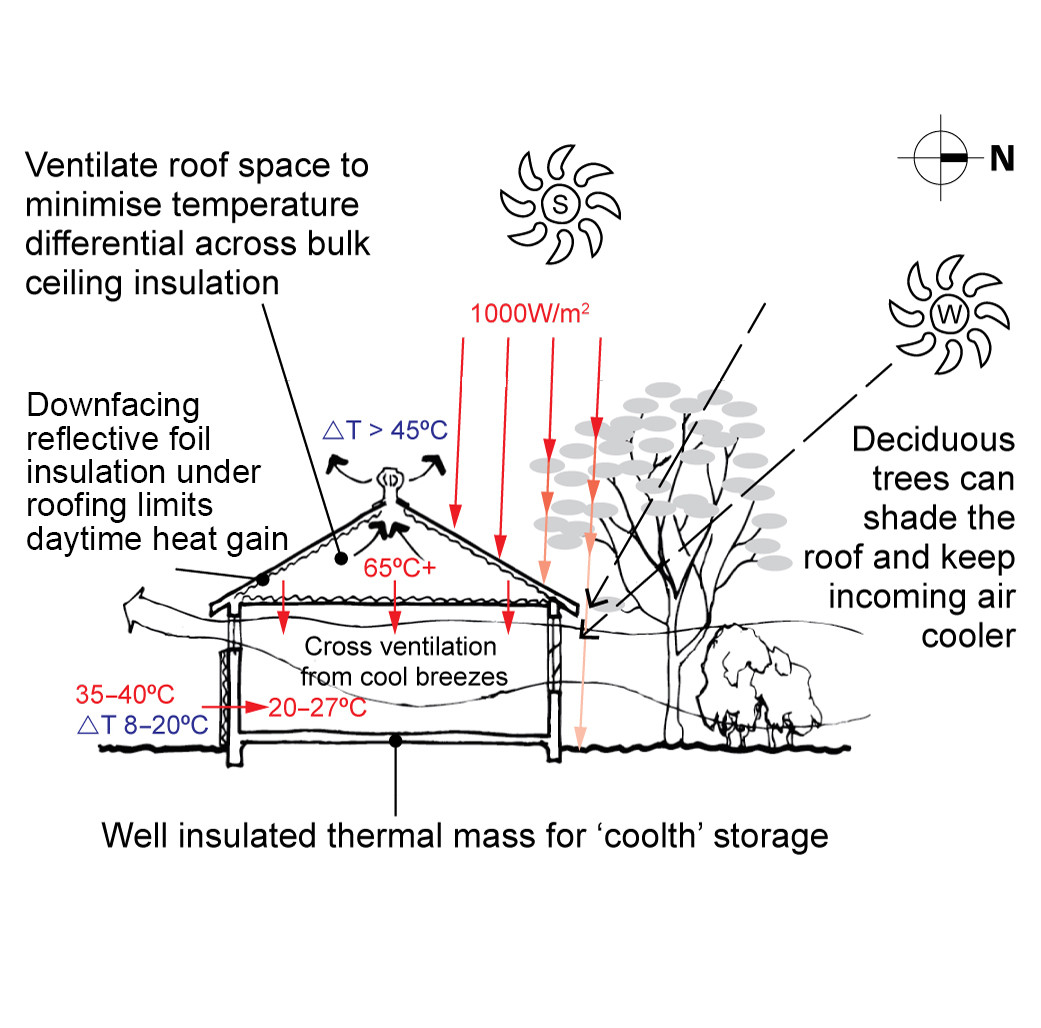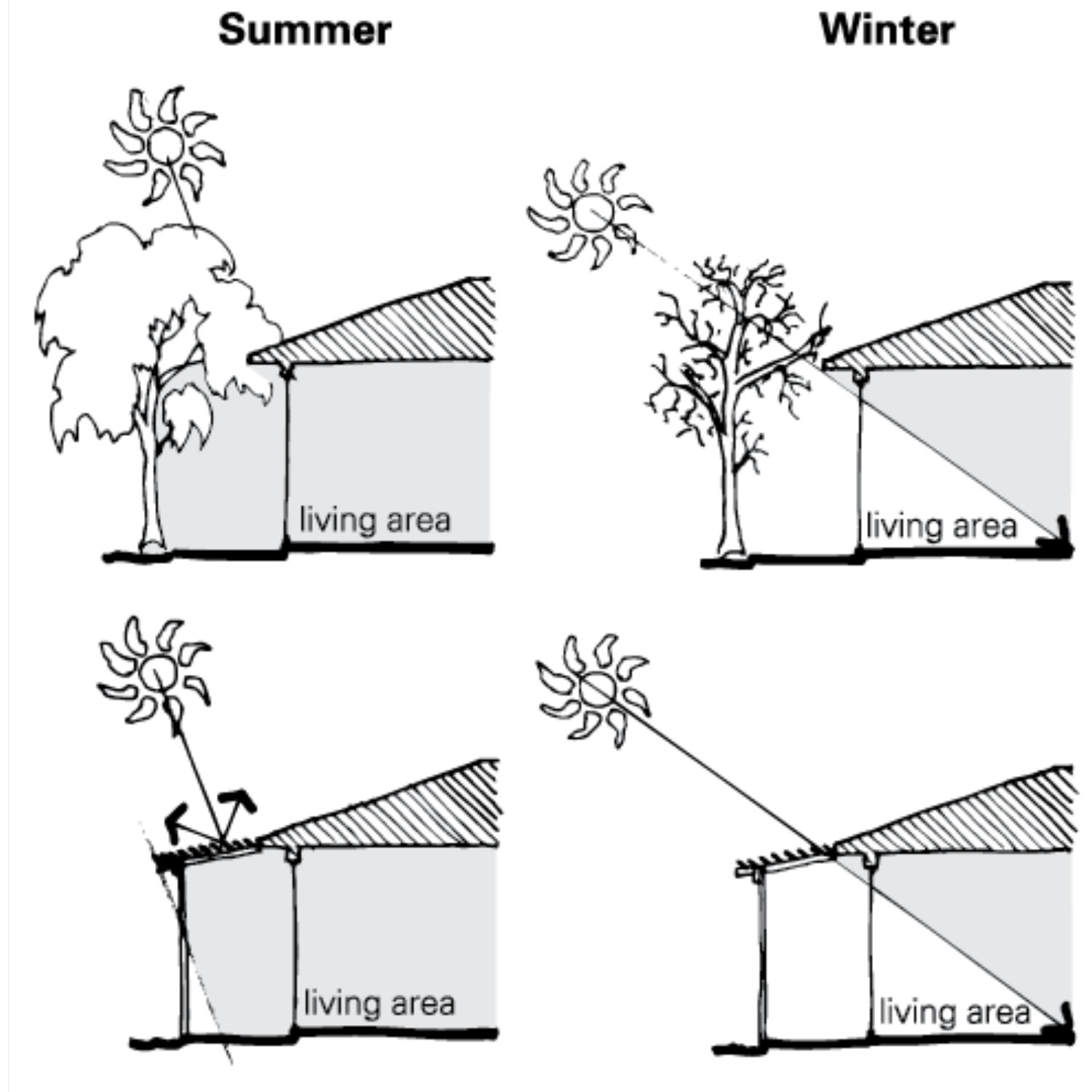CLICK ON THE DOWNLOAD BUTTON TO GET YOUR FREE HOME DESIGN GUIDE
DOWNLOAD NOW!Passive Solar Design
How to Use the Sun to Naturally Heat Your Home in Winter
Passive Solar Heating
Passive solar heating is the cheapest and most natural way to heat your home. It involves the following design principles :
- Place daytime living areas to the north of a home
- The use of appropriate areas of glass on north elevations
- Passive shading of glass
- Thermal mass for storing heat
- Appropriate insulation of roofs and walls
- Floor plan zoning based on heating requirements
- Advanced glazing solutions
If applied correctly in the design of your home, passive solar heating will maximise winter heat gain, minimise winter heat loss and concentrate heating where it is most needed.
Solar Theory
In order to achieve the best possible passive solar heating performance, daytime living areas should face north. Solar radiation is trapped inside the home when north facing windows are exposed to full sun in winter.
The trapped heat is absorbed and stored by materials with high thermal mass (usually masonry) inside the house and is re-released at night when it is needed.
At night, heat is lost through glass. This can be controlled by using heavy drapes, double glazing and other advanced glazing methods.

Thermal Mass
In winter, thermal mass is used to store heat from the sun during the day and then re-release it at night when it is required, helping the home stay warm. Thermal mass acts as a thermal battery.
Materials like concrete, bricks and tiles have a high thermal mass. Lightweight materials such as timber have low thermal mass.
The appropriate design of thermal mass throughout your home by your Architect can make a big difference to comfort and ultimately to heating and cooling bills.
During summer, thermal mass absorbs heat, keeping the house comfortable. Thermal mass should be exposed to direct solar radiant heat sources.
Thermal mass should also be located predominantly in the northern half of the house where it will absorb most passive solar heat.
Use thermal mass dividing walls between north facing living rooms and south facing bedrooms. Clever design can incorporate thermal lag that will distribute some of the heat to bedrooms.
Good Planning
With regards to planning, it is best to place living areas along the north façade and bedrooms along the south façade.
As living areas and the kitchen are the most used areas of a home, it’s important that they are passively heated. Utility and service areas such as bathrooms and laundries are used for short periods and generally require less heating.
How to Design Your Home to be Cool in Summer
Cooling Your Home
Passive cooling is the cheapest and most natural way of cooling a home. Architects can maximise the passive cooling qualities of a home by using the following principles:
- 1. A house needs to be orientated to gain maximum exposure to cooling breezes. Most cooling breezes in summer are from the south west in Perth (ie Fremantle Doctor). The design should allow cool breezes to pass right through the house.
- 2. Barriers to air paths need to be reduced in order to increase natural ventilation through the house.
- 3. Use ceiling fans to provide ventilation and air movement in the absence of breezes.
- 4. Provide paths for warm air to exit the building.
- 5. The floor plan needs to be zoned in order to maximize comfort for daytime activities and sleeping comfort.
- 6. Use appropriate windows and glazing to minimize unwanted heat gains and maximize ventilation.
- 7. Use effective shading (including planting).
- 8. Use adequate levels of appropriate insulation. Add sufficient insulation to roofs which are a major source of radiant heat gain.
- 9. Use light coloured roofs and walls to reflect more solar radiation and reduce heat gain. Light coloured surfaces reflect heat, while dark surfaces absorb heat. However, some local councils prohibit light coloured roofs in order to prevent glare to surrounding properties. Avoid black or dark grey roofs.
- 10. Maximise the indoor/ outdoor relationship and provide appropriate screens, shaded, rain protected outdoor living spaces.
- 11. Maximise convective ventilation with high level windows, ceiling and roof space vents. Houses can be cooled by using high level windows and vents, which create convection currents that provide cooling in the absence of any breezes.

Shading
Good orientation is essential for effective passive shading. Passive shading of windows allows maximum winter solar gain and prevents summer overheating of indoor spaces.
This is achieved with northerly orientation of glazing and well designed eaves overhangs. Fixed shading devices can maximise solar access to north facing glass throughout the year without requiring any user effort.
Fixed shading above windows excludes the high angle summer sun but admits lower angle winter sun.
Examples include eaves, awnings and pergolas with louvres set to the correct angle.
Correctly designed eaves by your Architect are the simplest and cheapest shading method for northern elevations.
Alternatively, a pergola, shade frame or suitably sized shade projections above north facing windows can be added.
East and west facing windows require a different approach, as low angle sun from these directions is more difficult to shade.
The size of east and west windows should be kept to a minimum where possible, or use appropriate shading devices. Adjustable shading is the optimum solution for these elevations.
Shade structures added to the external face of the window (louvres, shutters etc) or deep pergolas are suitable for east and west facing walls.

Using Landscaping to Cool Your Home
Landscaping and building form can be designed in such a way to deflect and control the flow of breezes, or to block unwanted sun. As part of the design you can also use planting to shade the house.
Deciduous vines can be pruned in autumn to allow filtered winter sun through, while quickly growing in spring to cover the whole pergola during the hot summer months.
Plant deciduous trees to the north and lower trees or shrubs to the east and west facades. Ensure plantings do not obscure breezes, but channel them toward the openings.
Where shading can’t be provided, such as when too close to the boundary, “smart glass” or reflective film can be used to reduce heat gain.
However these techniques will reduce natural light levels as well as winter heat gain.
